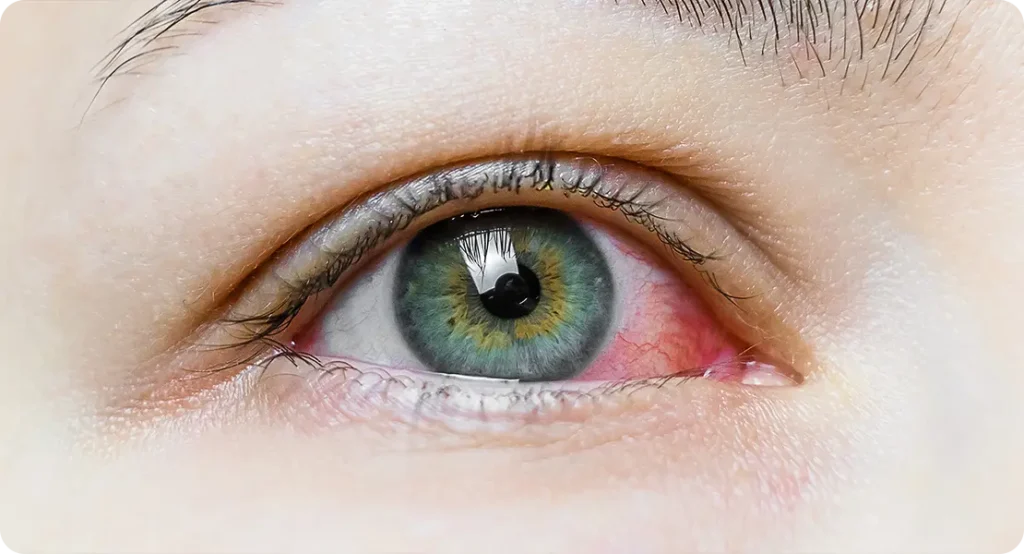Cataract surgery is a common and generally successful procedure aimed at restoring clear vision by replacing the eye’s cloudy natural lens with an artificial intraocular lens (IOL). However, some patients may experience cloudy vision following the surgery, which can be concerning. Understanding the potential causes and available treatments is essential for effective management.
Immediate Post-Surgery Cloudiness
It’s typical to experience blurred or unclear vision in the days, and sometimes even weeks, after cataract surgery. This is often due to normal swelling in the eye as part of the healing process. Patients with larger, denser, or firmer cataracts are more likely to experience more inflammation, leading to foggy vision or a sensation akin to looking through steam. Anti-inflammatory eye drops prescribed by your surgeon can help alleviate this swelling, with vision typically clearing up over a few days to a week.
Causes of Immediate Post-Surgery Cloudiness
- Corneal Oedema: The cornea may absorb extra fluid during surgery, leading to swelling (edema). This swelling can cause light to scatter as it enters the eye, resulting in blurred or hazy vision.
- Cystoid Macular Odema (CME): Also known as Irvine–Gass syndrome, CME involves the accumulation of fluid in the macula—the central region of the retina responsible for detailed vision. This condition can lead to decreased visual acuity and distorted vision.
- Ocular Surface Dryness: Surgical procedures can disrupt the tear film, leading to dry eye symptoms. A deficient or unstable tear film can cause intermittent blurriness and discomfort.
Management Strategies
- Topical Medications: Anti-inflammatory eye drops, such as corticosteroids or nonsteroidal anti-inflammatory drugs (NSAIDs), are commonly prescribed to reduce inflammation and address conditions like corneal oedema and CME.
- Artificial Tears: For ocular surface dryness, lubricating eye drops can provide relief and improve visual clarity.
- Monitoring and Follow-Up: Regular postoperative check-ups are essential to monitor the healing process and promptly address any complications that may arise.
In most cases, immediate post-surgery cloudiness resolves as the eye heals, with significant improvement typically observed within a few days to weeks. Adherence to prescribed medications and postoperative care instructions plays a crucial role in ensuring optimal recovery and visual outcomes.
While immediate post-surgery cloudiness is a common and usually transient experience, understanding its causes and management can help patients navigate the recovery process with greater confidence and ease.
Posterior Capsule Opacification (PCO): Understanding and Management
Posterior Capsule Opacification (PCO), often referred to as a “secondary cataract,” is a common complication following cataract surgery. While the primary objective of cataract surgery is to restore clear vision by replacing the clouded natural lens with an artificial intraocular lens (IOL), PCO can lead to a recurrence of visual disturbances similar to the original cataract.
Development and Pathophysiology of PCO
During cataract surgery, the eye’s natural lens is removed, but the posterior capsule—a thin, transparent membrane—is preserved to support the new IOL. Over time, residual lens epithelial cells left behind during surgery can proliferate and migrate across this capsule. This cellular growth leads to the thickening and clouding of the capsule, resulting in PCO. The onset of PCO can vary, occurring weeks, months, or even years after the initial surgery.
Incidence and Risk Factors
PCO is the most common complication of cataract surgery, with studies indicating that it affects a significant proportion of patients postoperatively. Several factors can influence the likelihood of developing PCO:
- Age: Younger patients tend to have a higher incidence of PCO compared to older individuals.
- Surgical Technique: The method and precision of the cataract extraction can impact the residual lens epithelial cells, influencing PCO development.
- Intraocular Lens (IOL) Material and Design: Certain IOL materials and designs are associated with a reduced risk of PCO.
Symptoms of PCO
Individuals with PCO may experience symptoms similar to those of the original cataract, including:
- Blurred or Hazy Vision: A gradual decline in visual clarity, making it seem as though one is looking through frosted glass.
- Glare and Light Sensitivity: Increased discomfort or difficulty seeing in bright light conditions, often accompanied by halos around lights.
- Difficulty Reading or Performing Close-Up Tasks: Challenges in activities that require sharp vision, such as reading or sewing.

Diagnosis of PCO
Diagnosis of PCO is typically straightforward and involves:
- Patient History: Discussing the onset and nature of symptoms with the patient.
- Visual Acuity Testing: Assessing the clarity of vision to determine the extent of impairment.
- Slit-Lamp Examination: Using a specialised microscope to examine the eye’s structures, allowing the ophthalmologist to observe any opacification of the posterior capsule.
Treatment for PCO
The standard and effective treatment for PCO is a YAG laser capsulotomy. This outpatient procedure involves the following steps:
- Preparation: The patient’s eye is dilated using eye drops, and a local anaesthetic is applied to ensure comfort.
- Laser Application: An ophthalmologist directs a YAG laser to create a small opening in the clouded posterior capsule. This opening allows light to pass through to the retina unobstructed, restoring clear vision.
- Post-Procedure: The procedure is quick, typically lasting only a few minutes. Patients often notice an immediate improvement in vision, though some may experience temporary floaters. Normal activities can usually be resumed shortly after treatment.
Risks and Considerations
While YAG laser capsulotomy is generally safe, potential risks, though rare, include:
- Retinal Detachment: A serious condition where the retina separates from the back of the eye.
- Increased Intraocular Pressure: A temporary rise in eye pressure, which can be managed with medication.
- IOL Dislocation: Movement of the intraocular lens from its original position.
Patients are advised to have a thorough discussion with their ophthalmologist about the benefits and risks before undergoing the procedure.
Prevention Strategies
While it may not be possible to prevent PCO entirely, certain strategies can reduce its incidence:
- Optimising Surgical Techniques: Ensuring meticulous removal of lens epithelial cells during surgery can minimise the risk of PCO.
- Selecting Appropriate IOLs: Using IOLs with designs and materials less conducive to epithelial cell proliferation can help reduce PCO development.
Posterior Capsule Opacification is a common but manageable condition that can occur after cataract surgery. Recognising the symptoms and seeking timely treatment through procedures like YAG laser capsulotomy can effectively restore vision and improve quality of life.
Other Potential Causes of Blurred Vision Post-Cataract Surgery
While cataract surgery aims to restore clear vision, some patients may experience residual visual disturbances due to various factors. Understanding these potential causes is essential for effective management and optimal visual outcomes.
Residual Refractive Errors
Postoperative blurred vision can result from residual refractive errors, including:
- Astigmatism: This occurs when the cornea or lens has an irregular curvature, leading to distorted or blurred vision at all distances.
- Myopia (Short-Sightedness): Objects nearby are seen clearly, but distant objects appear blurred.
- Hyperopia (Long-Sightedness): Distant objects are clear, while close objects are blurred.
These refractive errors may persist or arise after surgery due to:
- Pre-existing Conditions: If not fully corrected during surgery, existing refractive errors can continue to affect vision.
- Surgical Factors: Minor variations during the procedure can lead to unexpected refractive outcomes.
Management of Residual Refractive Errors After Cataract Surgery
Residual refractive errors, such as myopia (short-sightedness), hyperopia (long-sightedness), and astigmatism, can occur following cataract surgery, leading to less-than-ideal visual outcomes. Addressing these errors is essential to achieve the desired vision correction. Several management options are available:
1. Prescription Glasses
Tailored eyeglasses offer a non-invasive and effective solution for correcting residual refractive errors. They can be customised to address specific issues:
- Single Vision Lenses: Designed to correct either distance or near vision, depending on the patient’s needs.
- Multifocal Lenses: These lenses provide clear vision at multiple distances, beneficial for individuals with presbyopia or those requiring both near and distance correction.
2. Contact Lenses
Contact lenses serve as an alternative to glasses and can be particularly effective in certain scenarios:
- Soft Contact Lenses: Suitable for correcting mild to moderate refractive errors, providing comfort and flexibility.
- Rigid Gas Permeable (RGP) Lenses: Beneficial for correcting higher degrees of astigmatism and can offer sharper vision by maintaining their shape on the eye.
- Toric Lenses: Specifically designed to correct astigmatism by having different powers in various meridians of the lens.

3. Refractive Surgery
Surgical interventions can provide a permanent solution to residual refractive errors:
- Laser-Assisted In Situ Keratomileusis (LASIK): This procedure reshapes the cornea using a laser to correct refractive errors.
- Photorefractive Keratectomy (PRK): An alternative for patients with thinner corneas or those unsuitable for LASIK, PRK involves removing the corneal epithelium before reshaping the cornea with a laser.
- Small Incision Lenticule Extraction (SMILE): A minimally invasive procedure that removes a small piece of corneal tissue (lenticule) to correct myopia and astigmatism.
4. Intraocular Lens (IOL) Exchange
In cases where the residual refractive error is significant and attributable to the implanted IOL’s power, exchanging the IOL may be considered:
- IOL Exchange: Surgically removing the existing IOL and replacing it with one of the correct power can effectively address substantial refractive errors.
5. Piggyback IOL Placement
For patients with extreme ametropia or when IOL exchange is not feasible, implanting an additional IOL (piggyback IOL) can be an effective solution:
- Piggyback IOL: An additional lens is implanted over the existing IOL to correct the residual refractive error.
6. Limbal Relaxing Incisions (LRIs)
For residual astigmatism, small incisions at the edge of the cornea can help reshape it, reducing astigmatism. This procedure can be performed under local anaesthesia and is suitable for mild to moderate astigmatism.
Considerations for Management
The choice of corrective method depends on several factors:
- Magnitude and Type of Refractive Error: Higher degrees of error may necessitate surgical intervention, while lower degrees might be managed with glasses or contact lenses.
- Corneal Thickness and Health: Adequate corneal thickness is essential for laser surgeries like LASIK and PRK.
- Patient’s Lifestyle and Preferences: Some patients may prefer non-surgical options due to convenience or medical considerations.
- Ocular Surface Conditions: Dry eye syndrome or other surface abnormalities may influence the choice of correction method.
A thorough evaluation by an eye care professional is essential to determine the most appropriate management strategy for residual refractive errors following cataract surgery. This ensures optimal visual outcomes tailored to the patient’s specific needs and circumstances.
Dry Eye Syndrome
Dry eye syndrome is a common postoperative condition characterised by insufficient tear production or rapid tear evaporation, leading to ocular surface dryness. Factors contributing to this condition include:
- Surgical Impact: The procedure can temporarily disrupt tear film production and distribution.
- Inflammation: Post-surgical inflammation can affect the glands responsible for tear production.
- Medication Use: Postoperative medications may reduce tear production as a side effect.
Symptoms of Dry Eye Syndrome
Patients may experience:
- Burning or Stinging Sensation: A persistent discomfort in the eyes.
- Foreign Body Sensation: Feeling as though there is something in the eye.
- Redness: Inflammation leading to a reddish appearance of the eye.
- Blurred Vision: Intermittent blurriness that improves with blinking.

Management of Dry Eye Syndrome
Effective strategies include:
- Artificial Tears: Over-the-counter lubricating eye drops can provide immediate relief.
- Prescription Medications: Anti-inflammatory eye drops may be prescribed to reduce inflammation and improve tear production.
- Lifestyle Modifications: Increasing ambient humidity, taking breaks during screen use, and staying hydrated can alleviate symptoms.
Residual refractive errors and dry eye syndrome are potential causes of blurred vision following cataract surgery. Recognising these conditions and implementing appropriate corrective measures can significantly enhance postoperative visual outcomes and patient satisfaction.
When to Seek Medical Attention After Cataract Surgery
While mild discomfort and blurred vision are common immediately following cataract surgery, certain symptoms may indicate complications that require prompt medical attention. It is crucial to monitor your recovery and be aware of signs that necessitate contacting your eye doctor.
Symptoms Requiring Immediate Medical Attention
- Severe Pain: Experiencing intense eye pain that does not subside with prescribed pain relievers is unusual and warrants immediate evaluation.
- Increasing Redness: While some redness is normal post-surgery, a significant increase may indicate inflammation or infection.
- Significant Decrease in Vision: A sudden or progressive loss of vision after the initial recovery period could signal complications such as retinal detachment or macular oedema.
- Eye Discharge: The presence of yellow or green discharge may suggest an infection that requires prompt treatment.
Potential Postoperative Complications
- Endophthalmitis: This is a severe, vision-threatening infection inside the eye that can occur after surgery. Symptoms include severe pain, redness, decreased vision, and discharge. Immediate medical intervention is essential to preserve vision.
- Retinal Detachment: Characterised by the separation of the retina from its underlying tissue, retinal detachment presents with symptoms such as sudden flashes of light, floaters, or a shadow over part of the visual field. This condition requires urgent surgical repair to prevent permanent vision loss.
- Cystoid Macular Oedema (Irvine–Gass Syndrome): This condition involves swelling of the central retina (macula) leading to blurred or distorted central vision. It typically develops weeks after surgery and may require anti-inflammatory medications or other interventions.
Preventive Measures and Recommendations
- Adhere to Postoperative Instructions: Follow all guidelines provided by your surgeon, including the use of prescribed eye drops and activity restrictions, to promote healing and reduce the risk of complications.
- Attend Follow-Up Appointments: Regular check-ups allow your eye doctor to monitor healing progress and detect any early signs of complications.
- Maintain Hygiene: Keep the eye area clean and avoid rubbing or pressing on the eye to prevent infections.
Prompt recognition and treatment of postoperative complications are vital for preserving vision and ensuring a successful recovery. If you experience any concerning symptoms, do not hesitate to contact your eye care professional immediately.

Conclusion
Experiencing cloudy vision after cataract surgery can be concerning. Understanding potential causes, such as posterior capsule opacification (PCO), and available treatments, including YAG laser capsulotomy, is essential. Maintaining regular follow-up appointments with your eye care provider and promptly reporting any unusual symptoms are crucial steps toward ensuring optimal visual outcomes after cataract surgery.

